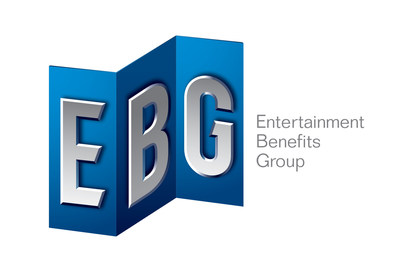I had the opportunity of interviewing Will Hsu, a UX Designer at Entertainment Benefits Group, LLC (EBG). Entertainment Benefits Group is a fast growing e-commerce company that specializes in live-entertainment and travel. I decided to interview Mr. Hsu because I wanted to learn more about the responsibilities of a UI/UX Designer, and how Pratt’s UI/UX design courses can be applied to the e-commerce and UI field. The following is a simplified transcript of our interview.
Question: Would you like to tell me more about yourself, and what your responsibilities are as a UX designer at Entertainment Benefits Group?
Answer: I have a management information system background; I transferred into design and studied Integrated Digital Media in NYU (specifically focusing on UX/Product design). I’ve been working at EBG for more than two years now, and I play various roles in the company. I do site optimization (process of using tools to improve the performance of a website), conducting A/B testing, researching, developing designs, and working with the DEV team to bring the project to life.
Question: What are some objectives you aim for in your designs?
Answer: An important objective is to meet the balance/middle-ground of business and customer’s goal — and this can be quite challenging at times. It’s important to create a user-centered design but designers also need to pay attention to the impact of the design choice in a business perspective. Our design team continues to push the boundaries and explore the different possibilities that would benefit both the stakeholders and customers — to do so, we would do countless amounts of research that’ll help convince our stakeholders about our design choices.
Question: How do you make decisions as a group, and how do you collaborate with other designers and the DEV team?
Answer: In my opinion, making decisions within a team of other designers is actually not that difficult. At times, it’s very helpful and eye-opening to have other like-minded designers provide feedback and support. A lot of times, it’s more difficult to work with non-designers like leadership, stakeholders, DEV team, etc. When working with them, communication is very important; we would have to persuade and inform them about our design choices and how these choices help our users. And sometimes, we would realize that the way the site was built may not allow us to implement certain ideas or it may take up too much time.
Question: How do you come up with new design ideas?
Answer: Researching helps a lot — for instance, looking at data, user complaints, and industry trends helps me determine different ways to improve the product for our users. Even on my free time, I would always browse the internet on the latest designs trends and articles to gain more knowledge and develop more design ideas.
Question: What was a project that you really enjoyed working on? Would you like to tell me a bit about your design process for this product/project?
Answer: I’ll talk about my most recent project, where I worked on EBG’s login registration. For many years, the website’s login registration hasn’t been updated and it was such a big change that it took us a large amount of time to accomplish. Our strategy was to (1) create an easy registration and clear log-in and (2) improve brand perception and eventual purchase. To do this, we collected quantitative data through Adobe Analytics, Mouseflow, and Qualtrics to record and analyze user’s behavior on the site. We also did research to determine what the best log-in/registration process is and how that practice can be implemented into our website.
Question: I have a background in Graphic Design and sometimes I focus too much on making the product look as pretty as possible while forgetting to focus on how functional it should be. How do you make confident UX design choices yet also pay attention to the visual aspect?
Answer: Visual is also really really important — it’s one of the biggest factor of product design. However, the designer should always make sure that the product can function well first; designer can always go back and update the appearance later. In our company, we created an internal design system (style guide) — and a lot of our existing elements and components are reusable throughout the website.
Question: What happens after the product is complete? Do you follow the same process of creating a new product?
Answer: No, but in an ideal world we should follow the design process — and honestly, it depends on the project and scenario. For instance, our company has two separate DEV teams and the way they accomplish their goals are very different. This is one of the factors that affects the process and approach to getting the project completed.
Question: How do you actually identify bad design? A lot of times in class, my professor would provide examples and we would have to find bad/good features…but sometimes I would find myself nitpicking features and design choices. So, how do you actually identify bad design from an existing product?
Answer: That’s a good question. One important factor to determine if a product is a bad design is if this product helps their user achieve their goal or solve their issue. A good product is never just about solving the user’s issues but how effortless it is to help them achieve their objective. For example, in an e-commerce site, the user’s objective is to make purchases on products that they want/need. To help the user obtain this objective, we would have to make sure the UX design of the check out process is smooth. If it’s difficult for the user then the design needs more improvement. If the user can’t locate it (at all) then it’s considered as bad design.
Thanks again, Will Hsu! Thank you for giving me your time to conduct this interesting and mind-opening interview. If you are interested in learning more about Will Hsu’s projects, please feel free to visit his portfolio page.
